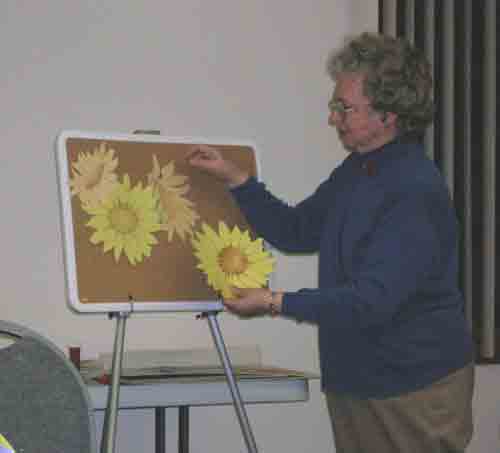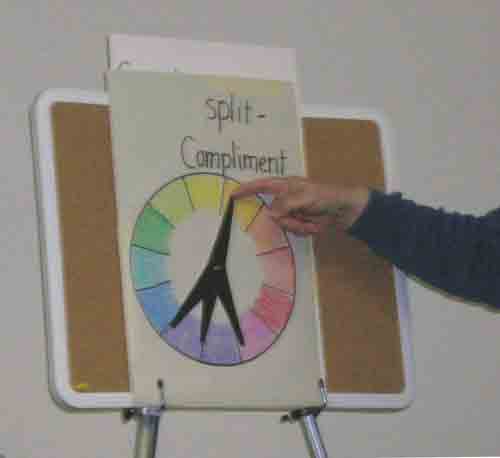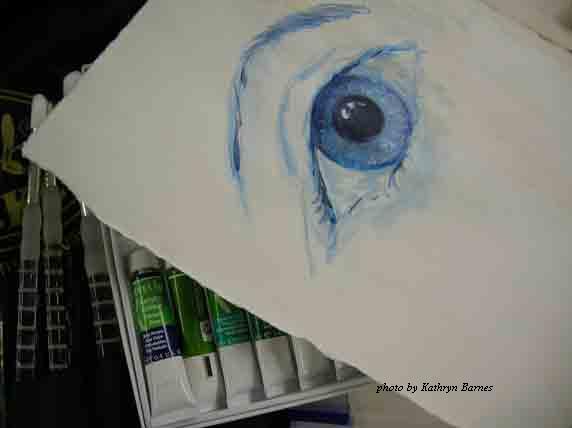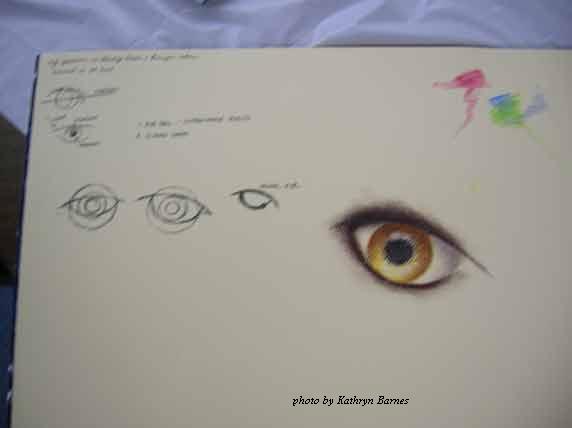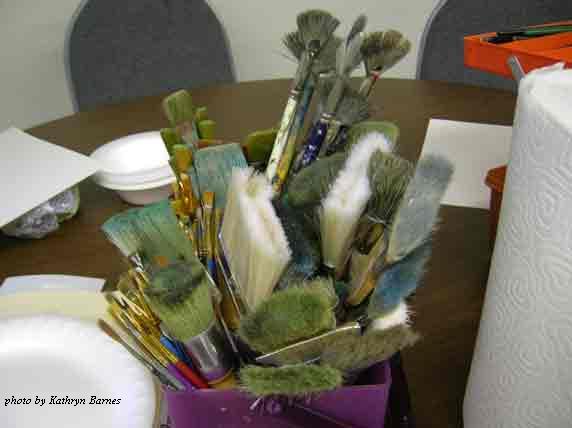Composition
Compositional shapes are more interesting when varied in size and
placement. Eleanor Shaw demonstrated compositional techniques and color theory.
Each corner in a painting should have a different shape...i.e. negative space.
Shapes should overlap, and show dimension.
The golden mean, dividing into thirds horizontally and vertically, and placing focal points where the lines intersect, is good to incorporate into artworks.
Use perspective correctly. Use the true proportion size of figures depending on where they are located in the artwork.
Complimentary colors are opposite on the color wheel.
Analogous colors are ones next to each other on the color wheel.
Primary: Blue, Red, Yellow for artists and Cyan, Magenta and Yellow for photographers.
Secondary are the colors one achieves when mixing 2 primary colors.
Red + Yellow= Orange
Blue + Yellow = Green
Red + Blue = Purple
Orange, Green, and Purple are the secondary colors.
Monochromatic colors are variations of one color. Eleanor used an example of a work she had done called, "Grandma's House." It is also an example how to build interest in an artwork using a winding road. Fences should not be across the front of a painting and trees should not be lollipop/similar in rows, but varied, as they are in nature. Eleanor also gave a tip telling the class how important it is to leave an entrance into the painting, such as a gap in a fence.
Fence posts, like lines, should vary in line width, shape, etc.
Values and textural differences make for good art.
With rounded flower shapes, long leaves/spikes help with the design.
It is important to begin with a good design and composition than to find out later when the painting is finished, how much it needs alteration.
Many artists start with sketches. Mrs.Shaw showed how she cuts out shapes to analyze placement. She then gave guild members different shapes to experiment with.



